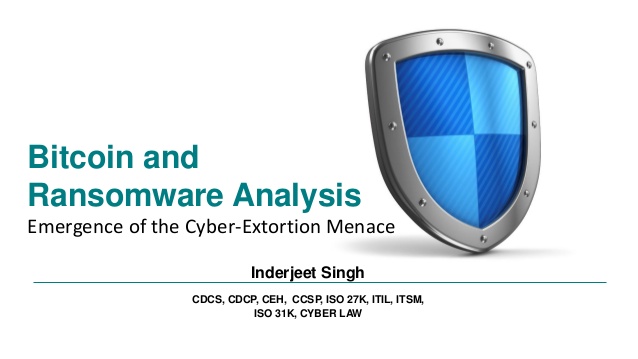Bitcoins and Ransomware Analysis
Ransomware (or crypto-ransomware) is a sophisticated piece of software that incorporates advanced encryption algorithms to block system files and demands payment in return for the key that can decrypt the blocked content. The end user has no idea what this password for decryption could be, nor can they regain access to their files.
In a similar way to advanced financial and data stealing malware, ransomware is able to evade detection by normal antivirus products. But this is where the similarity ends.
As soon as the ransomware threat is on the system, it encrypts the content and lets the user know that money need to be delivered in a certain amount of time. If the ransom is not paid, encrypted content is lost for good.
For this reason, victims of ransomware are very much affected, because you may pay the money, but it’s not sure if the blocked content will become available again. Ransomware once encrypts users’ files and demands bitcoin payments to decrypt them.
Bitcoin, a decentralized cryptographic currency that has experienced proliferating popularity over the past few years, is the common denominator in a wide variety of cybercrime and more so for Ransomware.
Increasingly, Bitcoin is becoming a staple utility among cyber criminals – two of the digital currency’s main attractions are its provisions for pseudo anonymity and its irreversible transaction protocol. Unfortunately, these provisions engender the dichotomous incentives between legitimate users, who wish to transfer money efficiently and securely, and cyber criminals, who leverage these properties to commit irrevocable and supposedly untraceable financial fraud.
Although the notion of digital currencies has existed long before Bitcoin’s debut, Bitcoin was proposed by an individual under the pseudonym Satoshi Nakamoto in year 2008. Nakamoto introduced a distributed public ledger that serializes a record of all confirmed transactions known as the blockchain. A fundamental breakthrough in technology, the blockchain enables the Bitcoin system to operate under a decentralized peer-to -peer
network where users are identifiable by public keys, or more commonly referred to as Bitcoin addresses, intended to provide pseudonymity. Users can transfer digital currency called bitcoins, to other addresses by issuing transactions, which are then broadcast to the public blockchain.
In the presentation Titled “ Bitcoin and Ransomware Analysis ” we discuss ransomware and how bitcoin are being utlised in cyber crime. we also have look at Bitcoin mining, trading and block chain concept.
